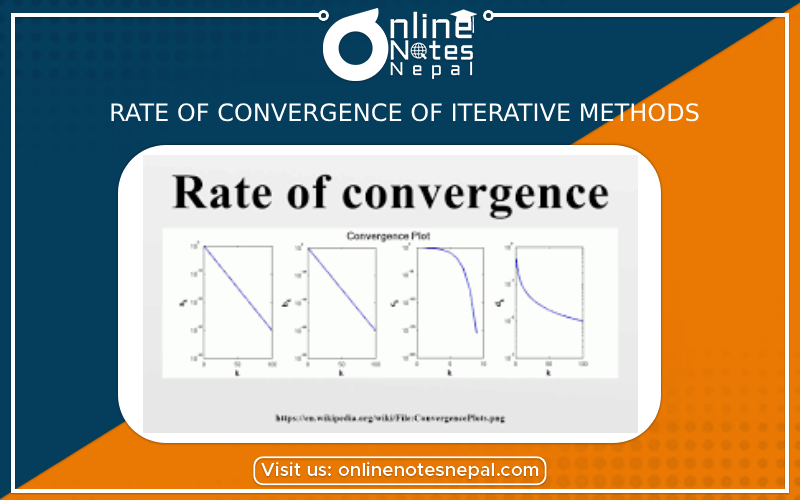Published by: Dikshya
Published date: 18 Jul 2023

Iterative methods for finding solutions or roots of equations can have different rates of convergence. The rate of convergence refers to how quickly the iterative sequence generated by the method approaches the desired solution. A faster rate of convergence means that the method reaches the desired solution with fewer iterations, while a slower rate of convergence implies that it takes more iterations to achieve the same level of accuracy.
Here are some common rates of convergence associated with iterative methods:
1. Linear Convergence:
- Linear convergence occurs when the error or the difference between consecutive iterates reduces by a constant factor at each iteration.
- Mathematically, if the error at iteration k is denoted by e(k), then linear convergence is observed when there exists a constant 0 < C < 1 such that |e(k+1)| ≤ C |e(k)| for all k.
- Examples of methods that typically exhibit linear convergence include the False Position Method and the Fixed-Point Iteration Method under certain conditions.
- Linear convergence is considered relatively slow compared to higher rates of convergence.
2. Superlinear Convergence:
- Superlinear convergence is faster than linear convergence.
- It occurs when the error decreases at a rate faster than a linear rate as the number of iterations increases.
- Methods like the Secant Method often exhibit superlinear convergence.
- Common examples of superlinear convergence include quadratic convergence and cubic convergence, which are even faster rates of convergence.
3. Quadratic Convergence:
- Quadratic convergence is a specific type of superlinear convergence.
- It means that the error reduces at a rate that is approximately the square of the previous error.
- Quadratic convergence is observed in methods like Newton's Method when the initial guess is sufficiently close to the root.
- It is significantly faster than linear convergence and can lead to rapid convergence.
4. Cubic Convergence:
- Cubic convergence is another type of superlinear convergence.
- It implies that the error decreases at a rate approximately cubic to the previous error.
- Methods like Halley's Method exhibit cubic convergence under certain conditions.
- Cubic convergence is even faster than quadratic convergence, allowing for very rapid convergence.
It's important to note that the convergence behavior of iterative methods can vary depending on factors such as the equation being solved, the initial guess, and any constraints or limitations present in the problem. While some methods may have fast convergence rates in general, they might encounter difficulties or slower convergence in specific scenarios. Therefore, it's advisable to consider the specific characteristics of the problem and choose an appropriate iterative method accordingly.